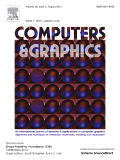
COMPUTERS & GRAPHICS-UK
Scope & Guideline
Transforming Ideas into Visual Realities
Introduction
Aims and Scopes
- Computer Vision:
The journal publishes research on algorithms and techniques for interpreting and understanding visual data from the world, including image processing, object detection, and scene reconstruction. - Graphics and Rendering Techniques:
Research in this area focuses on advancements in rendering methods, including real-time rendering, ray tracing, and physically-based rendering that enhance visual quality and computational efficiency. - 3D Modeling and Animation:
The journal covers methodologies for generating, manipulating, and animating 3D models, emphasizing the development of tools and techniques that facilitate realistic and expressive animations. - Virtual and Augmented Reality:
Research related to immersive environments, including the design, evaluation, and application of virtual and augmented reality systems for various fields such as education, healthcare, and training. - Data Visualization and Visual Analytics:
This area encompasses techniques for effectively presenting complex data through visual means, enhancing understanding and decision-making in diverse applications. - Machine Learning in Graphics:
The journal explores the integration of machine learning techniques with graphics, focusing on innovative applications such as image synthesis, style transfer, and generative models. - Human-Computer Interaction:
Research that investigates how users interact with graphical systems, including usability studies and the design of intuitive interfaces for various applications.
Trending and Emerging
- Generative Adversarial Networks (GANs):
There is a surge in research utilizing GANs for various applications, including image synthesis and style transfer, showcasing their versatility and effectiveness in producing high-quality visual content. - Augmented Reality (AR) and Virtual Reality (VR) Applications:
The journal is increasingly featuring studies on AR and VR, highlighting innovative applications in fields such as education, healthcare, and training, reflecting the growing importance of immersive technologies. - AI and Machine Learning Integration:
The incorporation of AI and machine learning techniques in graphics research is trending, with a focus on improving image processing, automation in modeling, and enhancing user interactions. - Interactive Visualization and User Engagement:
Research addressing interactive and engaging visualization methods is on the rise, emphasizing the need for tools that facilitate better user understanding and decision-making. - Point Cloud Processing and 3D Reconstruction:
There is a growing emphasis on techniques for processing point clouds and enhancing 3D reconstruction methods, driven by advancements in sensor technology and data acquisition.
Declining or Waning
- Traditional Image Processing Techniques:
There is a noticeable decline in publications focused on conventional image processing methods, as newer machine learning-based techniques gain prominence for their effectiveness and efficiency. - Static Visualization Methods:
Research centered around static visualization techniques has decreased, likely due to the growing interest in dynamic and interactive visualizations that better engage users. - Basic 3D Modeling Techniques:
Basic modeling techniques are less frequently addressed, as the community shifts towards more complex and automated approaches that leverage AI and machine learning for advanced modeling. - Non-immersive Interfaces:
The focus on non-immersive, traditional user interfaces is waning as immersive technologies such as VR and AR capture greater attention for their potential to enhance user experience. - Legacy Rendering Techniques:
Older rendering techniques, particularly those that do not incorporate modern advancements like ray tracing or real-time rendering optimizations, are becoming less common in published works.
Similar Journals
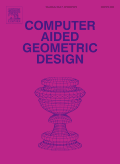
COMPUTER AIDED GEOMETRIC DESIGN
Exploring the Intersection of Design and EngineeringCOMPUTER AIDED GEOMETRIC DESIGN is a premier journal dedicated to the interdisciplinary field of geometric design, showcasing cutting-edge research that intersects with Aerospace Engineering, Automotive Engineering, and Computer Graphics. Published by ELSEVIER in the Netherlands, this esteemed journal has maintained its relevance and impact since its inception in 1984, with a converged publication strategy continuing through 2024. Currently categorized in Q2 across multiple domains, including Aerospace Engineering and Computer-Aided Design, it reflects a solid standing within the academic community. Researchers can access high-quality articles, contributing to the advancement of applied mathematics and simulation methodologies. Despite not being an open-access journal, it offers significant insights that support innovation in design processes, making it a vital resource for academics, professionals, and students aiming to deepen their understanding and explore new possibilities in geometric design and related fields.

ACM TRANSACTIONS ON GRAPHICS
Unveiling the Next Generation of Graphics SolutionsACM Transactions on Graphics, a premier journal published by the Association for Computing Machinery, stands at the forefront of research in the field of computer graphics and computer-aided design. With its ISSN 0730-0301 and E-ISSN 1557-7368, this highly respected publication has maintained a stellar reputation since its inception in 1982, showcasing groundbreaking work that spans the latest innovations and applications in graphics technology. Ranked within the top tier (Q1) of its category in 2023 and occupying the 5th position out of 106 in the Scopus rankings, this journal holds a significant impact factor, reflecting its critical role in advancing knowledge and fostering collaboration among researchers, professionals, and students alike. Although it does not offer open access options, the journal provides a diverse array of scholarly articles aimed at delineating theoretical advances, practical techniques, and emerging trends within the discipline, ensuring that its readership remains at the cutting edge of the evolving landscape of digital graphics.

Human-centric Computing and Information Sciences
Championing Open Access for Global Knowledge ExchangeHuman-centric Computing and Information Sciences, published by the Korea Information Processing Society, represents a leading platform in the field of computer science, particularly focusing on the interaction between humans and computational systems. With an impressive Q1 ranking in the 2023 category of Computer Science (miscellaneous) and a commendable Scopus rank of #14/232 (94th percentile), this journal has established itself as a cornerstone for researchers and practitioners dedicated to advancing understanding in this vital area. Understanding the significance of making technology more accessible and effective for users, the journal has been an Open Access publication since 2011, promoting wide dissemination of knowledge without barriers. The journal's scope encompasses innovative methodologies, user experience design, and the integration of human factors into computing environments, making it essential reading for anyone interested in the intersection of technology and society. With all articles freely accessible, the journal not only contributes to scholarly discourse but also encourages collaboration among researchers worldwide, fostering further advancements in human-centric computing.
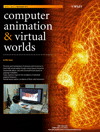
COMPUTER ANIMATION AND VIRTUAL WORLDS
Connecting Creativity with Cutting-edge Technology.COMPUTER ANIMATION AND VIRTUAL WORLDS, published by Wiley, is a pivotal journal in the fields of Computer Graphics and Computer-Aided Design, as well as Software. With a focus on the intersection of technology and creativity, the journal provides a platform for researchers and professionals to share innovative studies, new methodologies, and insights that shape the future of computer animation and virtual environments. Currently holding a Q2 category in Computer Graphics and a Q3 in Software for 2023, it ranks #63 out of 106 in its niche, highlighting its influence and relevance in the academic community. Though the journal operates under a subscription model, it also offers options for open access, ensuring that a broader audience can engage with groundbreaking research. The journal has been publishing continuously since its inception in 2004 and looks forward to further contributions as it moves towards its 20th anniversary in 2024. Whether you are a seasoned researcher, an industry professional, or a student eager to explore these dynamic fields, COMPUTER ANIMATION AND VIRTUAL WORLDS is an essential resource for advancing knowledge and innovation.

IMAGE AND VISION COMPUTING
Advancing visual technology through innovative research.Image and Vision Computing, published by Elsevier, serves as a leading international journal focused on the dynamic fields of computer vision, pattern recognition, and signal processing. With its esteemed Q1 category rankings in these areas and an impressive standing in Scopus metrics, where it ranks 19th in Computer Vision and 23rd in Signal Processing, this journal has firmly positioned itself at the forefront of academic research and innovation. Established in 1983, it continues to publish cutting-edge research that drives advancements in technology and applications across various domains. The journal is committed to disseminating high-quality, peer-reviewed articles that address significant challenges and propose novel solutions, making it an essential resource for researchers, practitioners, and students alike. While not an open access journal, Image and Vision Computing offers a wealth of valuable insights into the ever-evolving landscape of visual computing technologies.
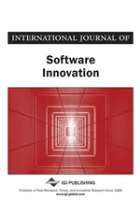
International Journal of Software Innovation
Empowering Scholars to Shape Software Innovation.The International Journal of Software Innovation, published by IGI Global, serves as a crucial platform for disseminating cutting-edge research in the field of software engineering and innovation. With its ISSN 2166-7160 and E-ISSN 2166-7179, this journal has a broad scope that encompasses multiple areas of computer science, including Artificial Intelligence, Computer Graphics and Computer-Aided Design, Computer Networks and Communications, Software, and Computer Science Applications. Since its inception in 2017 and continuing until 2024, the journal has established itself in Q4 quartiles across various categories, reflecting both emerging trends and foundational principles in software innovation. Although it does not currently follow an Open Access model, its findings are vital for researchers, professionals, and students aiming to understand and contribute to the evolving landscape of software technologies. Located in the United States at 701 E Chocolate Ave, Ste 200, Hershey, PA 17033-1240, this journal not only offers research insight but also encourages collaboration and knowledge sharing among scholars worldwide.

COMPUTER GRAPHICS FORUM
Driving Excellence in Computer Graphics ResearchCOMPUTER GRAPHICS FORUM, an esteemed journal published by Wiley, is a leading platform for disseminating cutting-edge research in the fields of computer graphics and computer-aided design. With a prestigious Q1 ranking in both Computer Graphics and Computer-Aided Design and Computer Networks and Communications (2023), this journal consistently showcases high-impact studies that influence the development of visualization techniques and graphic systems. Covering a wide array of topics from rendering algorithms to virtual and augmented reality applications, COMPUTER GRAPHICS FORUM is committed to fostering innovation and interdisciplinary collaboration within the global research community. Although it does not offer open access, the journal maintains a rigorous peer-review process, ensuring the highest standards of academic quality and integrity. With its rich history since 1982 and an ongoing commitment to advancing the state of knowledge in computer graphics, this journal is essential reading for researchers, industry professionals, and students looking to stay at the forefront of technological advancements.
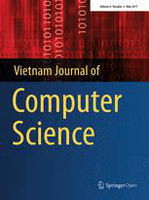
Vietnam Journal of Computer Science
Fostering collaboration for groundbreaking discoveries in AI and beyond.Vietnam Journal of Computer Science, published by World Scientific Publishing Co Pte Ltd, serves as a prominent platform for researchers and professionals in the rapidly evolving field of computer science. Launched as an Open Access journal in 2013, it aims to disseminate high-quality research across various subfields, including Artificial Intelligence, Computational Theory and Mathematics, Computer Vision, and Information Systems. With its ISSN 2196-8888 and E-ISSN 2196-8896, the journal provides valuable insights and contributes to the growing body of knowledge in computer science, particularly in Southeast Asia. Despite its relatively recent establishment, the journal has achieved significant rankings, including Q3 status in multiple categories and notable visibility in Scopus metrics, evidencing its commitment to fostering innovative research. This journal is essential for those looking to stay at the forefront of computational advancements and applications, particularly in Vietnam and beyond, facilitating an engaging dialogue among scholars and industry professionals.
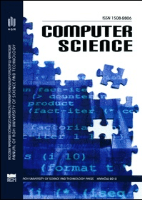
Computer Science-AGH
Exploring Diverse Dimensions of Computer ScienceComputer Science-AGH, published by the AGH University of Science & Technology Press in Poland, is an esteemed open access journal that has been disseminating high-quality research since 2004. With ISSN 1508-2806 and E-ISSN 2300-7036, this journal focuses on a diverse range of areas within the computer science discipline, including but not limited to Artificial Intelligence, Computational Theory, Computer Graphics, and Networks. While it currently holds a Q4 ranking across several categories as of 2023, it actively promotes research that contributes to the academic community's understanding and evolution in the field. The journal's commitment to open access ensures that vital research is accessible to a wider audience, fostering collaboration and innovation. With its comprehensive focus and strategic publication goals, Computer Science-AGH plays a crucial role in advancing the frontiers of computer science research and education, making it an invaluable resource for researchers, professionals, and students alike.
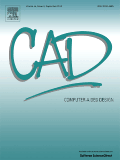
COMPUTER-AIDED DESIGN
Pioneering the Future of Computer-Aided CreativityCOMPUTER-AIDED DESIGN is a premier journal published by Elsevier Science Ltd, dedicated to the dynamic fields of Computer Graphics and Computer-Aided Design, as well as Industrial and Manufacturing Engineering. With a long-standing history since its inception in 1968, this journal plays a vital role in disseminating high-quality research and innovative methodologies that shape the future of design and engineering practices. It is positioned in the upper quartiles (Q1 and Q2) across multiple categories, highlighting its impact and reputation, with a notable 74th percentile ranking in Computer Graphics and Computer-Aided Design related fields. Researchers, professionals, and students will find valuable insights and advancements that not only push the boundaries of knowledge but also facilitate practical applications in the industry. The journal's emphasis on enhancing collaboration between academia and industry aligns with contemporary trends towards integrated design and manufacturing processes, making it an essential resource for anyone looking to stay at the forefront of technological advancement. Authors are encouraged to submit original articles that contribute to the multidisciplinary discourse within these domains.